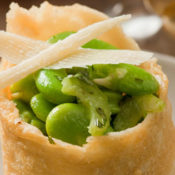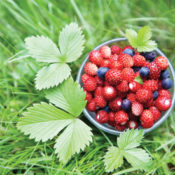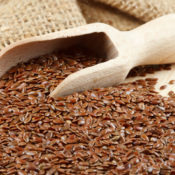Food scientists want to set the record straight about carbohydrates—the food group made up of starches, sugar, and fiber. A prevailing myth is that starchy foods quickly turn into sugar in the upper GI tract and put one at risk for developing type 2 diabetes. But new information is coming to light. Diabetes is not about sugar and starch. And one type of starch, known as resistant starch, staves off digestion until reaching the colon, where it may contribute to digestive health and offer other key benefits.
Ongoing research from around the world suggests that resistant starch, or RS, may also help manage weight as well as blood glucose and insulin levels, prompting
experts to consider RS as a new type of dietary fiber.
“Resistant starch is part of the whole fiber story,” Hope Warshaw, noted registered dietitian and certified diabetes educator, tells the Post. “Soluble fiber is totally digested in the GI tract, and insoluble fiber is not digested and offers health benefits.
“Resistant starch has qualities of both types. Bacteria in the large intestine ferment it and produce short-chain fatty acids. These substances go to work to help maintain healthy blood levels of glucose and insulin, as well as improving satiety and decreasing insulin resistance—a problem vexing millions of Americans today.”
Many U.S. adults fall short of the dietary guidelines that recommend consuming 20-35 grams of fiber daily. Getting more fiber from high-RS foods could help close the gap.
Top 4 Foods With Resistant Starch |
||
|---|---|---|
| (In grams) | ||
| 10 | 1/2 cup navy beans | |
| 5-7 | 1 medium less-than-ripe banana | |
| 2.5 | 1/2 cup lentils | |
| 1-3 | 3/4 cup cold potato, pasta, or rice salad | |
Foods such as navy beans, other legumes, and less-than-ripe bananas are naturally high in resistant starch (see right chart). Salads or sushi made with cooked and cooled rice, pasta, and potatoes are also good sources. Why cold? In general, cooking breaks down starch. Cooling, however, crystallizes the starch and makes it more resistant to digestion.
Resistant starch is also being added to several brands of bread. Aunt Millie’s Bakeries in Fort Wayne, Indiana, uses Hi-maize brand RS from National Starch Food Innovation in several of its Healthy Goodness breads, including the Whole Grain White and potato bread varieties. Other companies that incorporate Hi-maize RS into selected products include Ener-G, Racconto, and Wegman’s.
To identify foods with added RS, consumers can check the ingredient list for the words starch, corn starch, or resistant corn starch.
“It’s not being kept as a secret from people,” explains Warshaw, who is coauthor of the Real Life Guide to Diabetes, “but companies are not required to call it resistant corn starch in the ingredients. Consumers can also look for the Hi-maize logo on some products that are made with it.”
Hi-maize natural fiber may be purchased from King Arthur Flour Company (kingarthurflour.com, 1-800-827-6836) for baking at home, she adds. In general, substitute one-fourth of each cup of flour with Hi-maize when making bread, muffins, or pancakes.
Summer Lentil Salad
(Makes 4 Servings)
1 cup lentils, uncooked
1 cup green beans, cooked
½ medium onion, diced
1 red pepper, cut into strips
2 tablespoons parsley, chopped
Olive oil
Cover lentils with water and boil until soft, but not mushy, about 20 to 35 minutes. Drain and cool. Combine beans with next four ingredients. Drizzle with oil. Chill.
 Hope Warshaw, MMSc, RD, CDE is the author of several books published by the American Diabetes Association and a consultant to National Starch Food Innovation
Hope Warshaw, MMSc, RD, CDE is the author of several books published by the American Diabetes Association and a consultant to National Starch Food Innovation
Become a Saturday Evening Post member and enjoy unlimited access. Subscribe now



Comments
Way back, in the early days of The Republic–when I was in the army–soldiers were fed beans, continuously and repetitiously.
Rather than being cheap and uncaring, the brass was, apparently, looking out for our health.
Who knew?